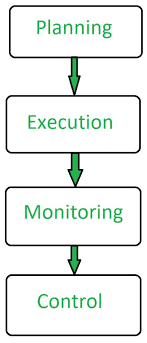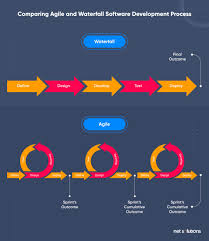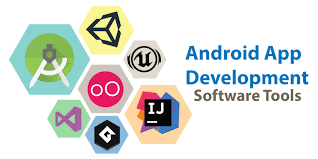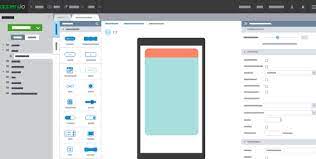Unlocking Success: The Power of Offshore Software Development
The Advantages of Offshore Software Development
Offshore software development has become a popular trend in the tech industry, with many companies opting to outsource their software development needs to offshore teams. This practice involves hiring a team of developers located in a different country to work on various software projects. While some may have reservations about this approach, there are several advantages to offshore software development that make it a viable option for businesses.
Cost-Effectiveness
One of the primary reasons companies choose offshore software development is cost-effectiveness. Hiring developers from countries with lower labor costs can significantly reduce the overall expenses associated with software development projects. This cost savings can be substantial and allow companies to allocate their resources more efficiently.
Access to Global Talent Pool
Offshore software development provides access to a diverse pool of talented developers from around the world. Companies can leverage the expertise and skills of professionals in different countries, ensuring that they have access to the best talent for their projects. This global talent pool offers a wide range of capabilities and experiences that can enhance the quality of the final product.
Faster Time-to-Market
By outsourcing software development offshore, companies can accelerate their time-to-market for new products and services. Offshore teams often work around the clock, allowing for continuous progress on projects and faster delivery times. This speed can give businesses a competitive edge by getting their products to market more quickly than if they were developed in-house.
Focus on Core Business Activities
Offshore software development allows companies to focus on their core business activities while leaving the technical aspects of software development to external teams. By outsourcing these tasks, organizations can free up internal resources and concentrate on strategic initiatives that drive growth and innovation.
Risk Mitigation
Offshore software development also helps mitigate risks associated with project delays or resource constraints. By working with offshore teams, companies can distribute project responsibilities across different locations, reducing dependency on a single team or location. This diversification minimizes risks and ensures continuity in case of unforeseen circumstances.
In conclusion, offshore software development offers numerous benefits that make it an attractive option for businesses looking to streamline their operations and enhance their competitiveness in the market. By leveraging global talent, reducing costs, accelerating time-to-market, and mitigating risks, companies can achieve greater efficiency and success in their software development endeavors.
7 Essential Tips for Successful Offshore Software Development
- Clearly define project requirements and goals before starting development.
- Choose an experienced offshore development team with a proven track record.
- Establish effective communication channels to ensure smooth collaboration.
- Set up regular progress updates and milestone reviews to monitor the project’s status.
- Ensure that intellectual property rights and data security measures are clearly defined in the contract.
- Consider time zone differences when planning meetings and deadlines.
- Be prepared for cultural differences and be respectful of diverse working styles.
Clearly define project requirements and goals before starting development.
To ensure the success of offshore software development projects, it is crucial to clearly define project requirements and goals before initiating the development process. By establishing a comprehensive understanding of what needs to be achieved and outlining specific objectives from the outset, both the offshore team and the client can align their efforts towards a common vision. This clarity helps minimize misunderstandings, enhances communication, and sets a solid foundation for a productive collaboration that leads to the delivery of high-quality software solutions that meet the desired outcomes.
Choose an experienced offshore development team with a proven track record.
When engaging in offshore software development, it is crucial to select an experienced team with a proven track record. By choosing a seasoned offshore development team, you can ensure that your project is in capable hands. An experienced team will have the expertise and knowledge to handle complex software projects efficiently and deliver high-quality results. Their proven track record demonstrates their reliability and ability to meet deadlines, ensuring a smooth and successful development process. Investing in an experienced offshore development team is a strategic decision that can lead to the successful execution of your software project.
Establish effective communication channels to ensure smooth collaboration.
Establishing effective communication channels is crucial in offshore software development to ensure smooth collaboration between teams located in different regions. Clear and open lines of communication help bridge the gap created by physical distance and time zone differences, enabling team members to share information, discuss project requirements, address issues promptly, and align on project goals. By leveraging various communication tools such as video conferencing, messaging platforms, and project management software, teams can foster transparency, build trust, and work cohesively towards successful project outcomes. Effective communication channels promote collaboration, enhance productivity, and ultimately contribute to the overall success of offshore software development projects.
Set up regular progress updates and milestone reviews to monitor the project’s status.
Setting up regular progress updates and milestone reviews is crucial when engaging in offshore software development. By establishing a structured communication process, businesses can closely monitor the project’s status, track milestones, and ensure that the development is on track. These updates provide transparency and accountability, allowing both the offshore team and the client to stay informed about the project’s progress, address any issues promptly, and make necessary adjustments to meet project goals effectively. Regular reviews help maintain alignment between all stakeholders involved in the development process and promote a collaborative environment for successful project completion.
Ensure that intellectual property rights and data security measures are clearly defined in the contract.
When engaging in offshore software development, it is crucial to ensure that intellectual property rights and data security measures are clearly defined in the contract. By clearly outlining these aspects in the agreement, both parties can establish a framework for protecting sensitive information and proprietary technology. This step helps mitigate risks related to data breaches, unauthorized use of intellectual property, and other security concerns, providing a solid foundation for a trustworthy and secure collaboration between the client and the offshore development team.
Consider time zone differences when planning meetings and deadlines.
When engaging in offshore software development, it is crucial to consider time zone differences when scheduling meetings and setting deadlines. Understanding the time variances between your local team and the offshore team can help ensure effective communication and collaboration. By planning meetings at times that accommodate both teams’ working hours and setting realistic deadlines that account for potential delays due to time zone disparities, you can enhance productivity and project efficiency in the offshore software development process.
Be prepared for cultural differences and be respectful of diverse working styles.
When engaging in offshore software development, it is crucial to be prepared for cultural differences and to show respect for diverse working styles. Different countries have unique cultural norms, communication styles, and work practices that may differ from what you are accustomed to. By acknowledging and embracing these differences, you can foster a positive working relationship with your offshore team, promote effective collaboration, and ensure the success of your software development projects. Open-mindedness, flexibility, and a willingness to learn from each other can lead to a harmonious partnership that leverages the strengths of diverse perspectives for mutual benefit.












